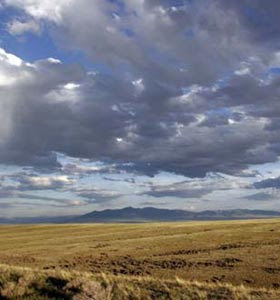I never felt particularly close to my paternal grandmother. She was pessimistic; she groused that I sat on the couch and read too much (“Don’t you ever go outside?”); and the candy jar in her living room only ever housed lemon drops and restaurant-style peppermint circles, which are the Heidi Montag and Spencer Pratt of the candy world: ubiquitous and completely without redemption.
However, she knew how to cook a goose, and I respected the fact that she was–and remains–the only person I’ve ever known who could actually cook my goose (and trust me, it’s needed a good basting on occasion). Also, she was, fundamentally, a good person, and especially in junior high, a big part of me understood that finding a fundamentally good person was a rarity. I didn’t “get” Grandma–we’d never hitch up into a shoulder-to-shoulder percolation of “Rapper’s Delight” by The Sugarhill Gang–we’d never hip hop the hippie the hippie to the hip hip hop, a you don’t stop the rock it to the bang bang boogie say up jumped the boogie to the rhythm of the boogie, the beat.
But Grandma was all right.
In the 7th grade, when I was assigned a biology project to collect and identify a slew of wildflowers, it was my grandma (having never sat on the couch and read all day thanks to the 80 cows on her Montana ranch with bulbous udders that had them lowing for relief twice a day) who walked the acres with me, plucking flowers out of the ground and handing them over for cataloguing with a terse, “Think this one’s called Shepherd’s Purse.”
So when she died in January of 1999, at the age of 83, her passing meant something. On a deeply personal level, I wasn’t affected, to tell you true. But she was emblematic of something bygone, and that fact moves me still.
She died in Montana, a handful of miles from her birthplace: a sod dugout on the family ranch, that passle of acres where she spent the majority of her life milking cows, feeding cows, cooking beans to feed the pigs, baking pies to sell to local restaurants. At 18, she married a Finn, and they raised two sons on their ranch of nearly a thousand acres (small stakes in Montana terms). In sum, she was a classic 20th Century Western woman, placing value on work and work again over words and emotions and how big and open the sky loomed above.
Despite my recognition that Grandma had represented something classic, her death came just as I was facing the first week of a new semester, just as personal debt was at an all-time high, just as I was willing to acknowledge that I had never felt intensely linked to this grandmother. I wasn’t sure I’d be flying to Montana to attend her funeral.
Then a sage, in the form of a friend, planted herself firmly in front of my head-down horizon and made my flight to Billings possible, telling me, “Funerals and the like, these kind of things are more important than you know. I think you need to go do this.”
I made my way to Billings to find that my friend had been smack-on right. On that trip, I found that, even though I hadn’t felt a one-on-one connection with Grandma Dorothy, I could, after her death, appreciate anew all those she had left behind, the crazy-quilt of individuals who were patched together due to her life, stitched more tightly in her absence.
Wednesday, January 13th, 1999, was my grandma’s day of memorial.


Leave a Reply